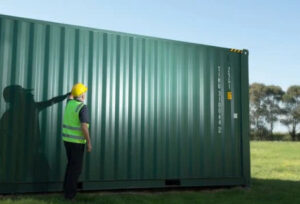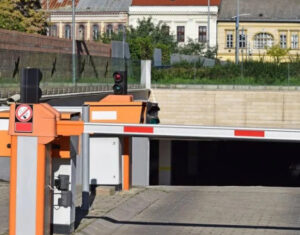I live in an area where tolls have gone almost entirely digital. I use a transponder on my car that is connected to an account and credit card, and with every parkway or bridge crossing that demands payment to the state – in a blink of an eye – I pay. For out-of-towners, some states provide a URL where the traveler needs to go to pay on a timely basis, but more and more states are snapping a shot of the car’s license plate and sending a bill to the home of the car’s owner.
Genius.
 We used to have incredible traffic jams around toll payments, but with a simple application to read license plates and connect them to a database of names, states have increased their toll collections through automated billing.
We used to have incredible traffic jams around toll payments, but with a simple application to read license plates and connect them to a database of names, states have increased their toll collections through automated billing.
Beyond this toll payment example, License Plate Recognition (LPR) or Number/Letter Recognition (NLR) through a video surveillance device is an invaluable tool. While most of us are familiar with license plates, other transportation vehicles have numbers on their sides. In the U.S., we use these to track a number of vehicles/vessels, including airplanes, boats, containers, trains, cars, automobiles and trucks.
At Konica Minolta, our FORXAI Video Security Solution practice has an application that enables the devices to recognize numbers or letters. Through a physical security system, ports that receive and store containers can not only have an image record of the container numbers, but also establish a database of container numbers received and use the cameras to monitor which containers leave their port – an excellent verification tool.

While there are similar ‘number review’ opportunities with cameras facing train cars that travel through a certain location or checkpoint – or airplanes that come into an airport – we see LPR used to control authorized access to private or secure locations.
Many municipalities store their road equipment in lots that are gated. Depending on location, we have also seen the public safety department gate the lots or garages where police vehicles are parked. Finally, to secure parking for employees in cities with tight parking, there is often a lot or garage for authorized-only vehicles governed by a gate or those large pillars that raise and lower to let a car through.
Prior to comprehensive LPR technology, these egresses were governed by keypads or key-cards, requiring the driver to stop and activate the approval to be let in. And if someone gained access to the code or card, they could get in with any vehicle. With LPR, however, as an authorized car or truck approaches the parking barrier, the camera recognizes the authorized plates and automatically lets the employee in. This saves the driver the hassle of finding the key-card or punching in a number. It’s fast, effective, and also prevents vehicle damage.
KABOOM🗲CRACK🎆
Gates that require a key card or code often suffer damage by vehicle drivers who try to maneuver the information input while NOT STOPPING THE VEHICLE. Trucks with a high cab trying to enter when the input is at car level are the primary offenders. First, it is terribly inconvenient for a driver that is perched high to code or scan at a spot that is low. They need to stop, step or reach down and then wait for the gate to clear. Over time, this is a real pain – so drivers try to slowly glide forward while reaching down and get that sweet spot to open the gate – before they crash it.
One Department of Transportation customer told us garbage truck drivers always tried to do this, and as drivers rolled toward the gate or the mechanism controlling the gate, they often crashed. Big trucks can easily do significant damage, so for him, using LPR saved his drivers the hassle and the city a ton of money on repair costs. Since his lot was for city employees as well, he ended up putting all parking lot users into his database so the camera’s LPR worked for ALL authorized employees coming into the lot.
TRACKING THE CROOKS
In a somewhat different application, law enforcement has used LPR to help track stolen cars. With cameras monitoring traffic, they can get alerts for license plates that match their list of stolen vehicles. This augments other efforts to find stolen vehicles and helps improve constituents’ property recovery rates.
USING VIDEO APPLICATIONS FOR THE GREATER GOOD
Video security solutions are not just about the camera images – their applications improve traffic flow, enable information gathering and provide detection of possible problems. Don’t sell yourself short with your video security system. It should be much more to your organization by offering information and oversight for you to take action. Utilizing software solutions that work with your video network makes not only the system smarter, but makes you a Superhero for getting the best technology in place.
Learn more online about Konica Minolta’s FORXAI Video Security Solution.